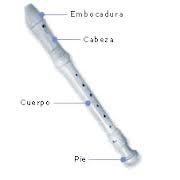
History of the Recorder
#history Recorder History
The recorder is a very noble instrument because you can get beautiful sounds from it, without needing to have a lot of knowledge of music. Perhaps that is why humans have used the flute since ancient times.
The knowledge of the flute as an instrument has been documented since the Stone Age, it is also said that the ancient Greeks used flutes that had six finger holes. (See also: Pan Flute)
But unlike today, when musical instruments are all associated with culture and art, the flute was considered a popular instrument and which was used by the lower class of society, was dismissed as an instrument.
RECORDER
In the Middle Ages, evidence has been found dating back to the 11th century of the use of transverse flutes. However, the recorder, as we know it today, dates from the 17th century.
Because there are instruments very similar to the current recorder that have been evidenced in the 14th century, there is a tendency to confuse the origin of the recorder with that century.
It was during the Renaissance period, in the 15th and 16th centuries that flutes began to gain notoriety and a variety of flutes with different sizes and different sounds began to be created.
RECORDER
In the Baroque era in the mid-17th century, the flute underwent notable changes and went from being a one-piece flute to a flute of three separate parts: the cylindrical head, the body with six finger holes and the joint of the foot.
It was from that century that the technique of making flutes began to improve, managing to build flutes with quality sound. Musicians fall in love with the sound of the beautiful instrument and the simplicity of the performance and begin to write specific scores for the recorder. Among them Bach and Vivaldi.
However, in the 17th century the instruments that are part of the orchestras began to gain space, so the recorder began to lose popularity. It took a long time for the recorder to reposition itself as an attractive musical instrument.
- Comments (3)
- Recommended
- Milestones



Here are your recommended items...
Here are your milestones...





